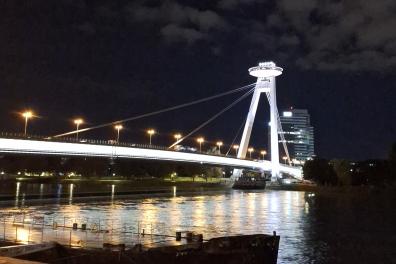Slovak

Find out more
Erasmus+ projects
Erasmus+ projects
VORTOJ - an interactive game for learning vocabulary on the move
The Slovak team at Inalco was asked by our Slovak partner, E@I, to take part in the Vortoj project as part of the EU's new Erasmus+ program. Three other European partners are involved in this project, two associations (Hungary, Netherlands) specialized in learning Esperanto and an elementary school in Slovakia.
The Vortoj game (whose name means "words" in Esperanto) aims to facilitate the learning of vocabulary and spelling thanks to a dance mat linked to a computer. It is aimed at elementary and middle school students. Vortoj will be available in eleven European languages (English, Slovak, French, Russian, Italian, Esperanto, Spanish, German, Dutch, Hungarian and Czech), and will offer several types of game with varying degrees of difficulty, enabling players to practice and master several language skills according to their preferences and needs.
SLOVAKE.EU 3 - Slovak language learning platform for allophones
Inalco's PLIDAM Slovak team has once again been asked by our Slovak partner, E@I, to take part in the third part of the European Slovake.eu project. The online Slovak language learning platform slovake.eu currently offers four different courses (levels A1, A2, B1, B2) available in 15 source languages. Developed as part of two EU-funded projects (2009-2011 and 2013-2015), it has already been operational for 10 years. This third phase once again brings together the 6 European partners, E@I (Slovak coordinator), Studio Gaus (German developers of the slovake.eu website), Comenius University Bratislava, Inalco, the Linguistic Institute of the Slovak Academy of Sciences and Vilnius University.
The main objective is to develop new teaching materials to be integrated into existing courses, focusing on the specific linguistic needs of migrants (dealing with real-life situations, i.e. in the office, at the insurance company, at the bank, etc.).
.